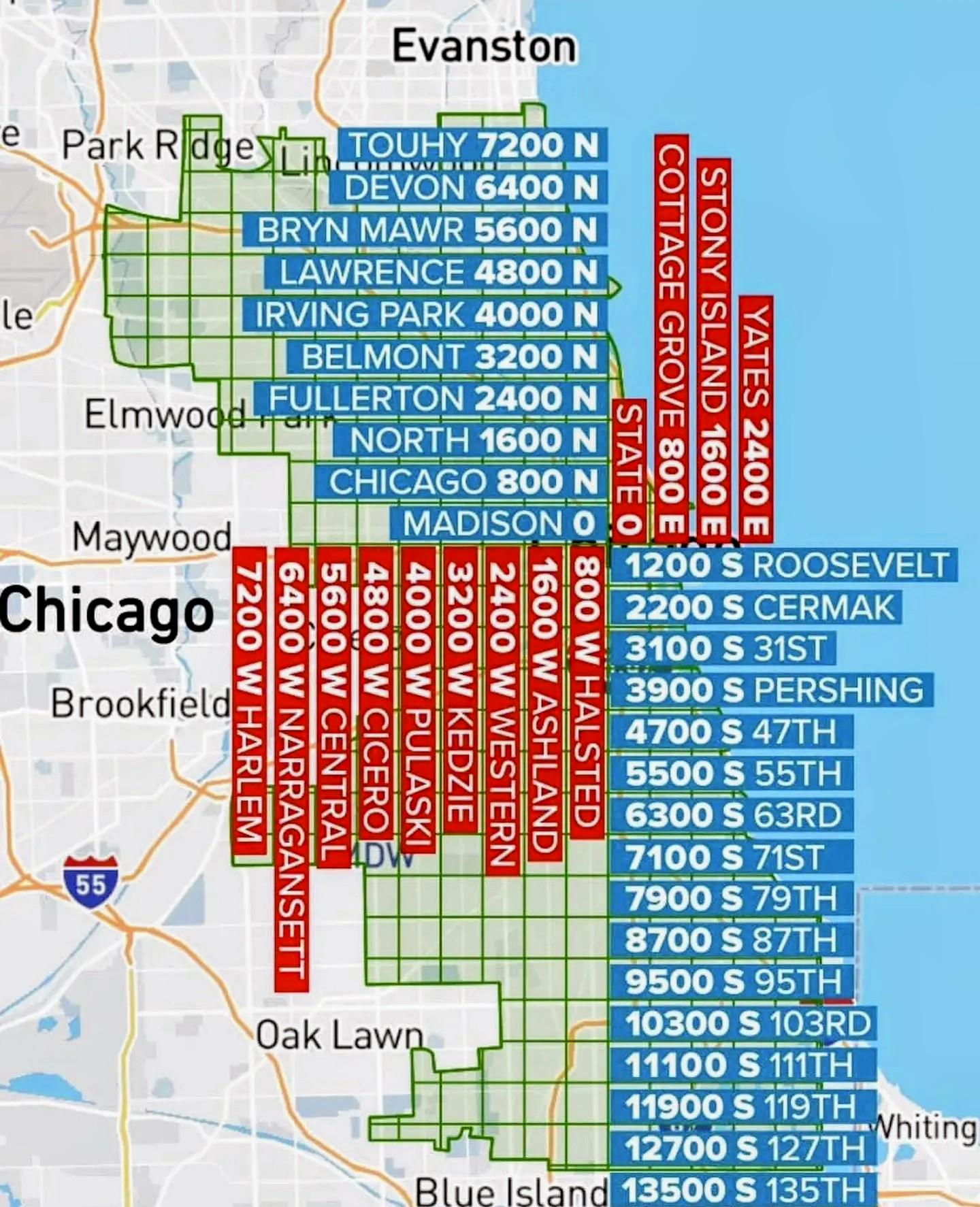Chicago Street Grid Map Every 8 Blocks is a Mile


Marcus Rodriguez
Historical Geography Expert
Marcus Rodriguez specializes in historical cartography and geographic data analysis. With a background in both history and geography, he brings unique...
Geographic Analysis
What This Map Shows
The Chicago Street Grid Map is a detailed visualization that illustrates the unique layout of Chicago's streets, emphasizing an essential aspect of the city's geography: every 8 blocks equals a mile. This grid system, characteristic of many American cities, simplifies navigation and urban planning. However, it's not just a practical layout; it reflects the city's historical development and influences how residents interact with their environment.
Deep Dive into Chicago's Street Grid
Chicago's street grid is a fascinating subject that reveals much about the city's history and urban planning. Established after the Great Chicago Fire of 1871, the grid was designed to promote efficient movement and land use. The primary streets run north-south and east-west, with each mile marked by a series of blocks that typically consist of 8 in each direction. This consistent spacing has made it easier for residents and visitors alike to navigate the city.
The grid system not only facilitates transportation but also plays a role in commercial activity and urban density. The closer streets within the grid often host a variety of businesses, while the outer areas may be more residential. Interestingly, the uniformity of the street grid can lead to a sense of disorientation for newcomers who may expect more diverse layouts found in older European cities.
Moreover, Chicago's grid is unique in its adaptation to the natural landscape. The city sits on flat land without significant geographical barriers, allowing for this extensive, organized street layout. Have you ever wondered why some areas of the city feel more congested than others? The grid plays a significant role in traffic patterns and urban density, particularly in the downtown area where streets converge, leading to higher foot and vehicle traffic.
Regional Analysis
Examining the Chicago street grid helps us understand regional differences within the city. For instance, in the Loop, the central business district, streets are often wider and designed to accommodate higher volumes of traffic and pedestrians. Conversely, neighborhoods such as Lincoln Park and Wicker Park exhibit a more intimate street layout, where the blocks may still adhere to the 8-block-per-mile rule, but the atmosphere feels significantly different due to the mix of residential and commercial spaces.
Moreover, the grid's impact on housing prices is noteworthy. Areas closer to the city center tend to have higher real estate values due to their proximity to amenities and transportation hubs. This creates a stark contrast with the outer neighborhoods, where homes are often more affordable but may lack the same level of access to urban resources. Interestingly, this disparity in housing costs reflects broader trends in urban development and gentrification across American cities.
Significance and Impact
Understanding Chicago's street grid is essential for several reasons. Firstly, it has significant implications for urban planning and development. Knowing that every 8 blocks equals a mile allows city planners to make informed decisions about where to place resources, develop public transportation, and design infrastructure.
Furthermore, the grid system has contributed to Chicago's reputation as a city of neighborhoods. Each neighborhood has its own character and identity, shaped in part by the grid layout. This can enhance community engagement and local pride, making the city feel more connected.
In recent years, discussions around urban sustainability and smart city planning have gained traction. The Chicago street grid's simplicity might serve as a foundation for innovative solutions, such as improved public transit routes or the introduction of pedestrian-friendly zones. As cities evolve, the lessons learned from Chicago's grid system can help other urban areas design their own street layouts for better accessibility and livability in the future.
In conclusion, the Chicago Street Grid Map is more than just a guide; it is a lens through which we can examine the interplay of geography, urban planning, and community. By appreciating how every 8 blocks equals a mile, we gain insight into the city's historical development, current dynamics, and future possibilities.
Have you ever thought about how street layouts affect your daily life? The Chicago grid not only shapes commuting patterns but also influences social interactions and economic activities, making it a cornerstone of the city's identity.
Visualization Details
- Published
- October 29, 2025
- Views
- 6
Comments
Loading comments...